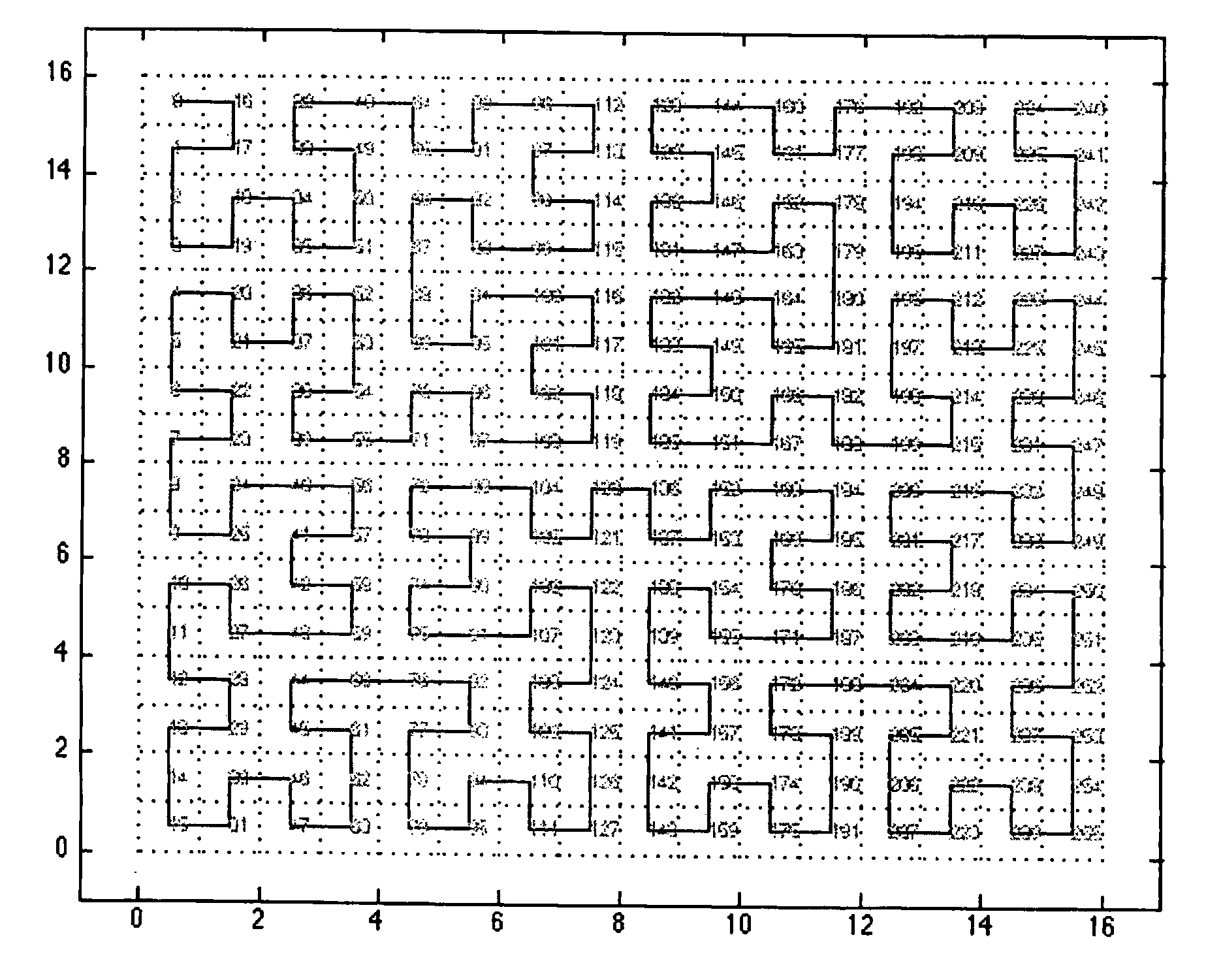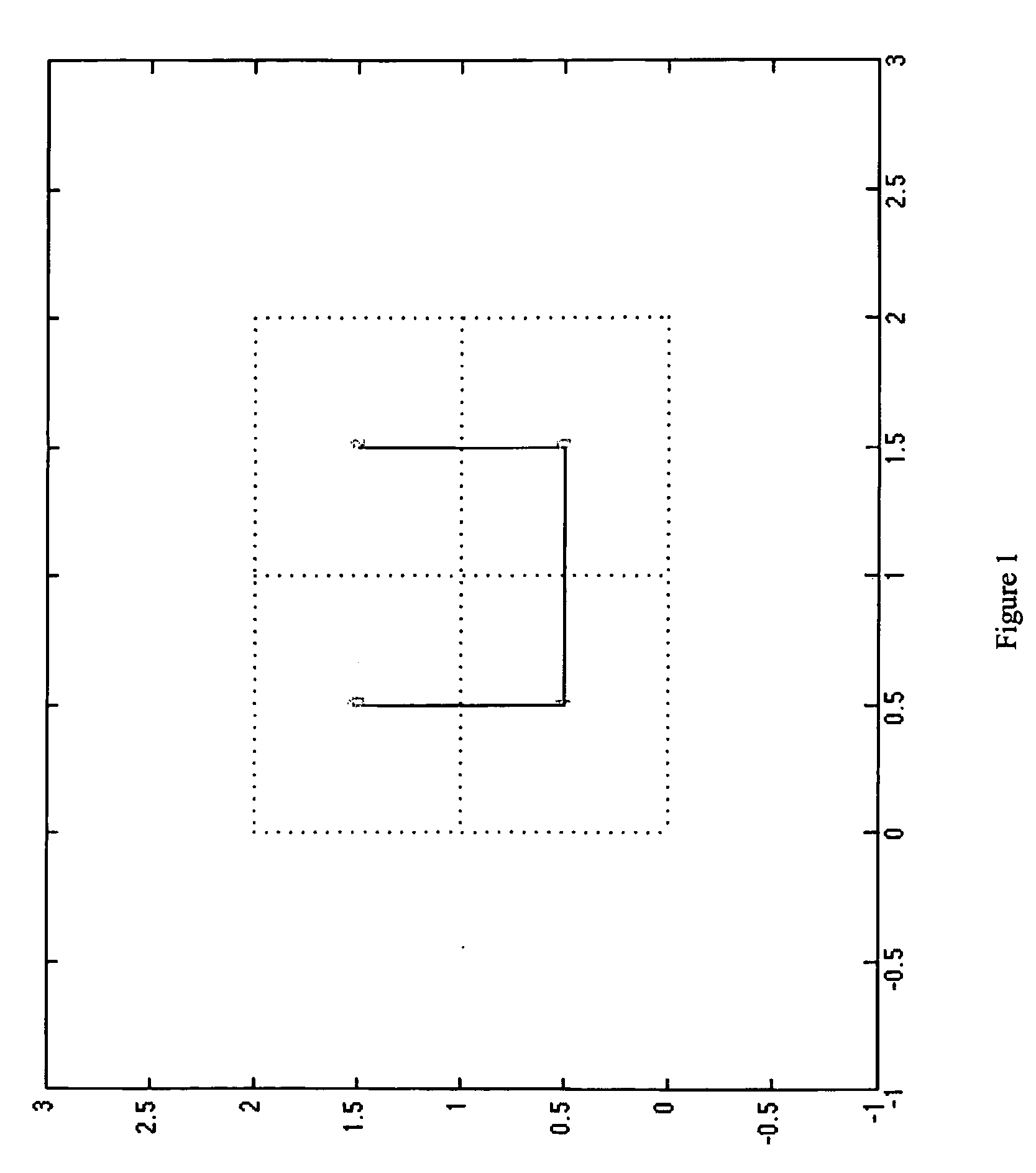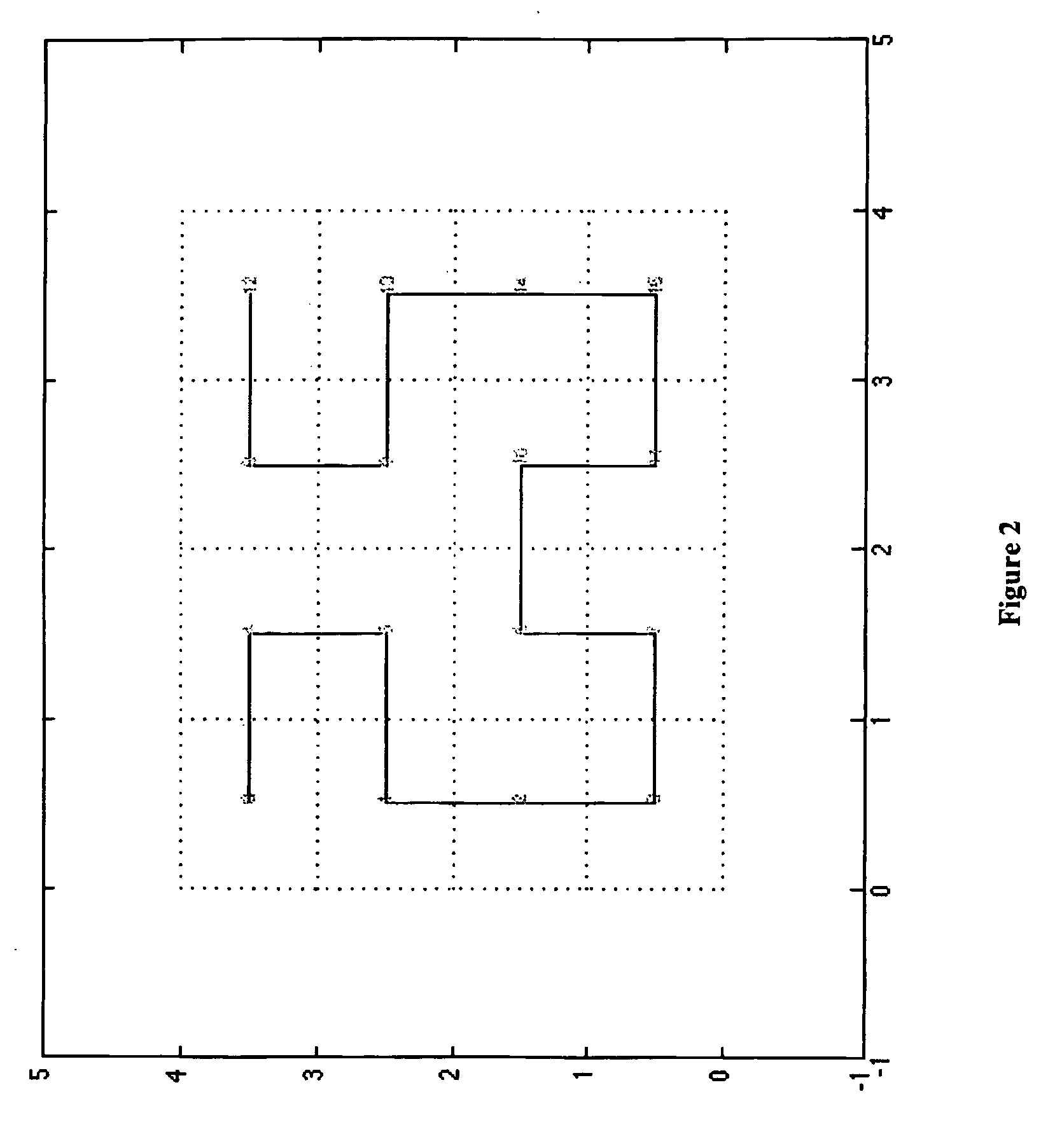Method of providing space filling patterns
- Summary
- Abstract
- Description
- Claims
- Application Information
AI Technical Summary
Benefits of technology
Problems solved by technology
Method used
Image
Examples
Embodiment Construction
[0015]With respect to the Hilbert transform, in a famous 1891 paper, D. Hilbert wrote that the function required for constructing the Hilbert space-filling curve can be represented in a lucid manner, if one avails oneself of its special geometric insight. The insight Hilbert was referring to is based on the fractal structure of the filling curve, where for each quadrant of the space, for each sub-space, the sub-curve follows the same structure as the curve in the lower order space (with rotations and reflections). The present invention uses this insight to formulate a general transform for generating the Hilbert space-filling indexes. A natural extension is an K-dimensional Hilbert space-filling transformation.
[0016]Due to its locality-preserving property, the Hilbert space-filling curve is used in a variety of applications, where data mapping from multiple-dimensions to one-dimension is required while preserving data clustering. An efficient algorithm to calculate the data indexes ...
PUM
 Login to View More
Login to View More Abstract
Description
Claims
Application Information
 Login to View More
Login to View More - R&D
- Intellectual Property
- Life Sciences
- Materials
- Tech Scout
- Unparalleled Data Quality
- Higher Quality Content
- 60% Fewer Hallucinations
Browse by: Latest US Patents, China's latest patents, Technical Efficacy Thesaurus, Application Domain, Technology Topic, Popular Technical Reports.
© 2025 PatSnap. All rights reserved.Legal|Privacy policy|Modern Slavery Act Transparency Statement|Sitemap|About US| Contact US: help@patsnap.com



